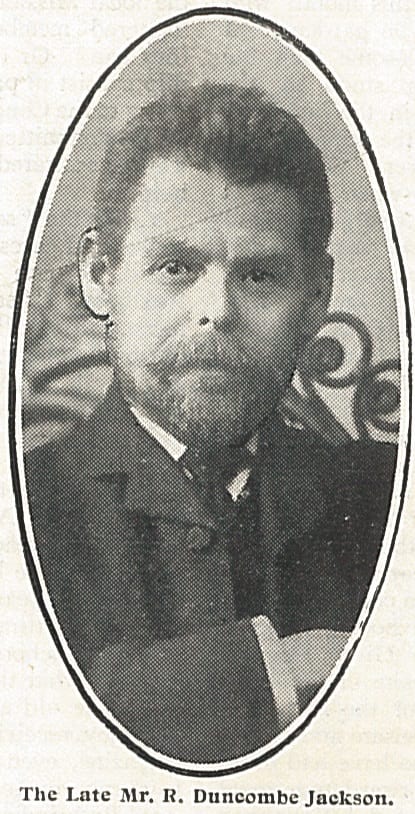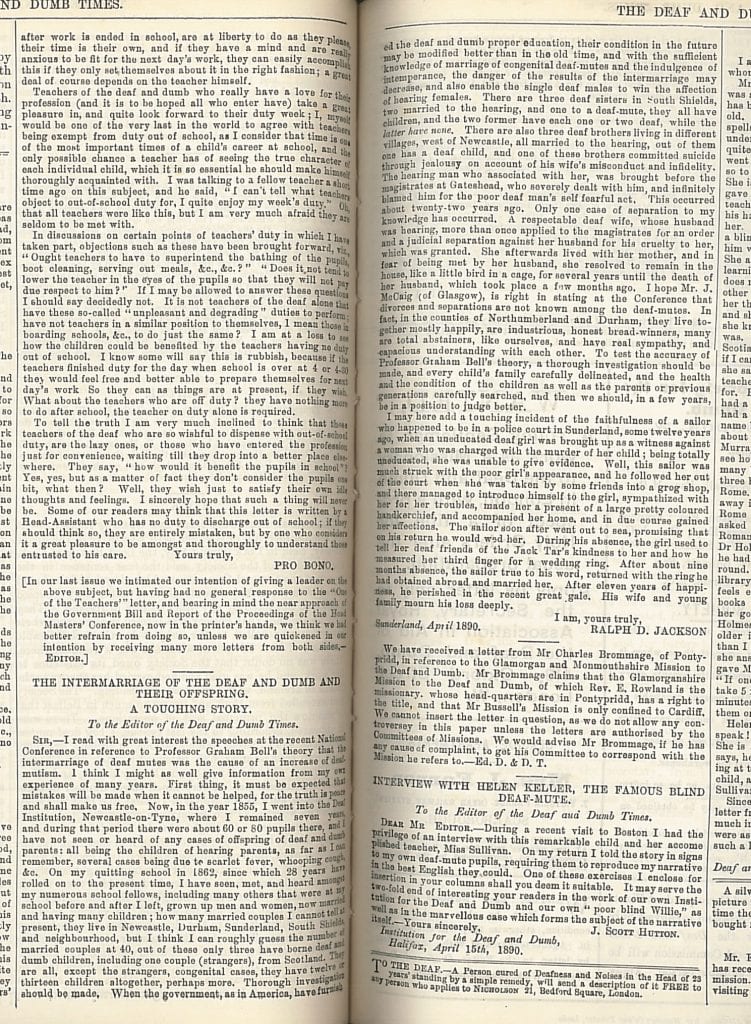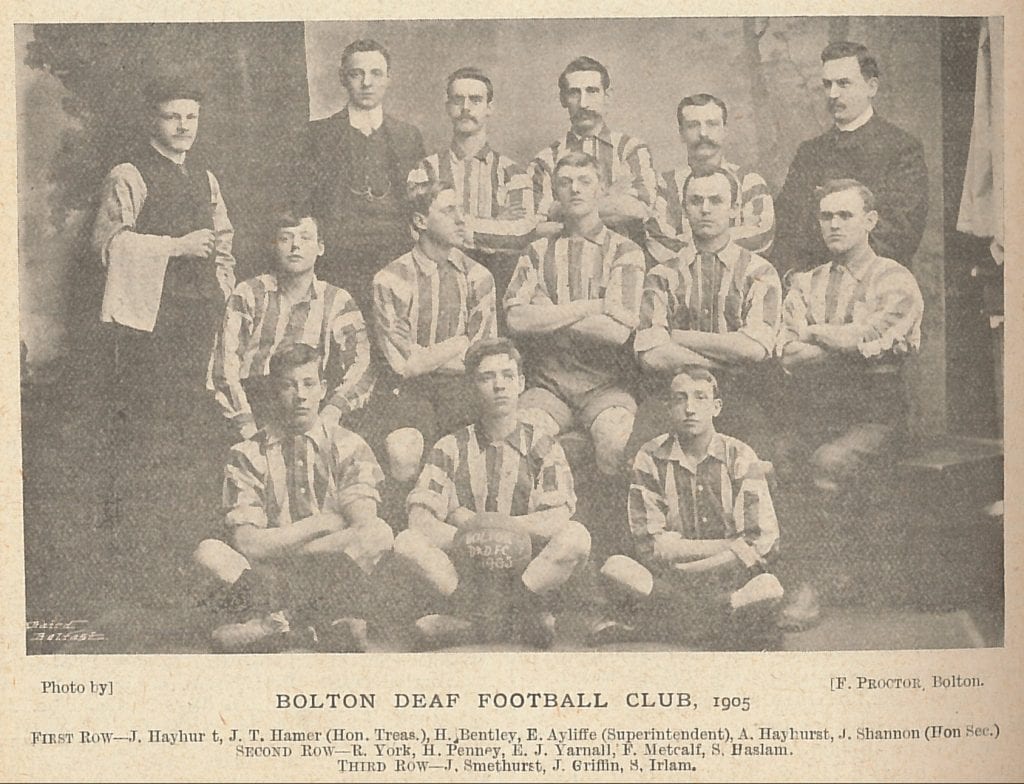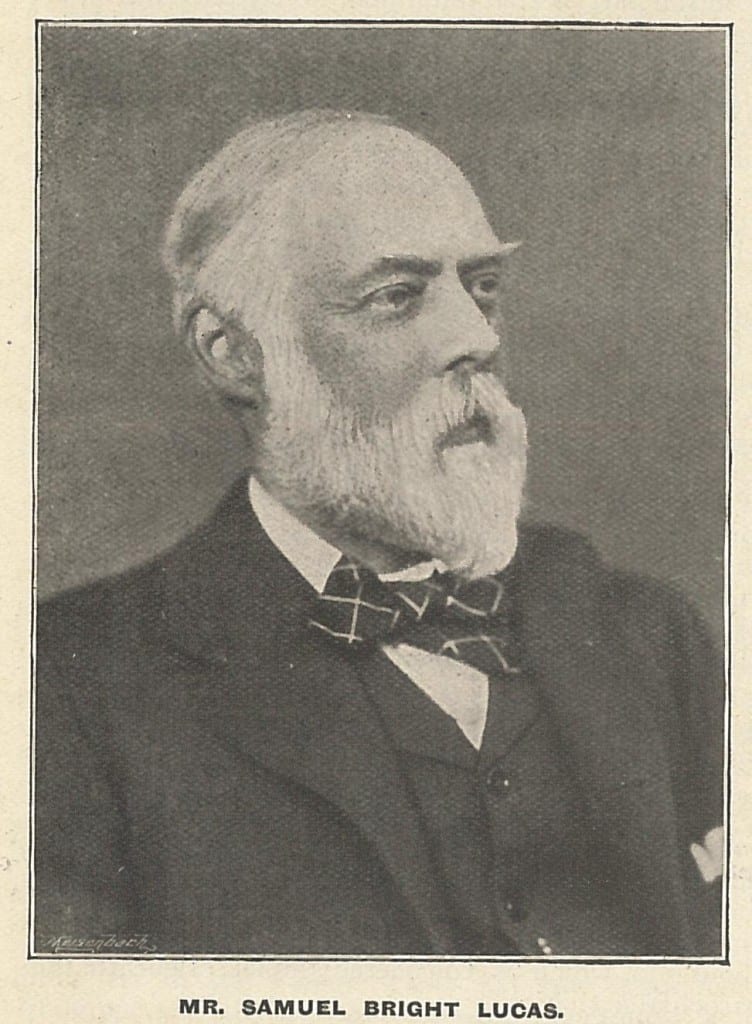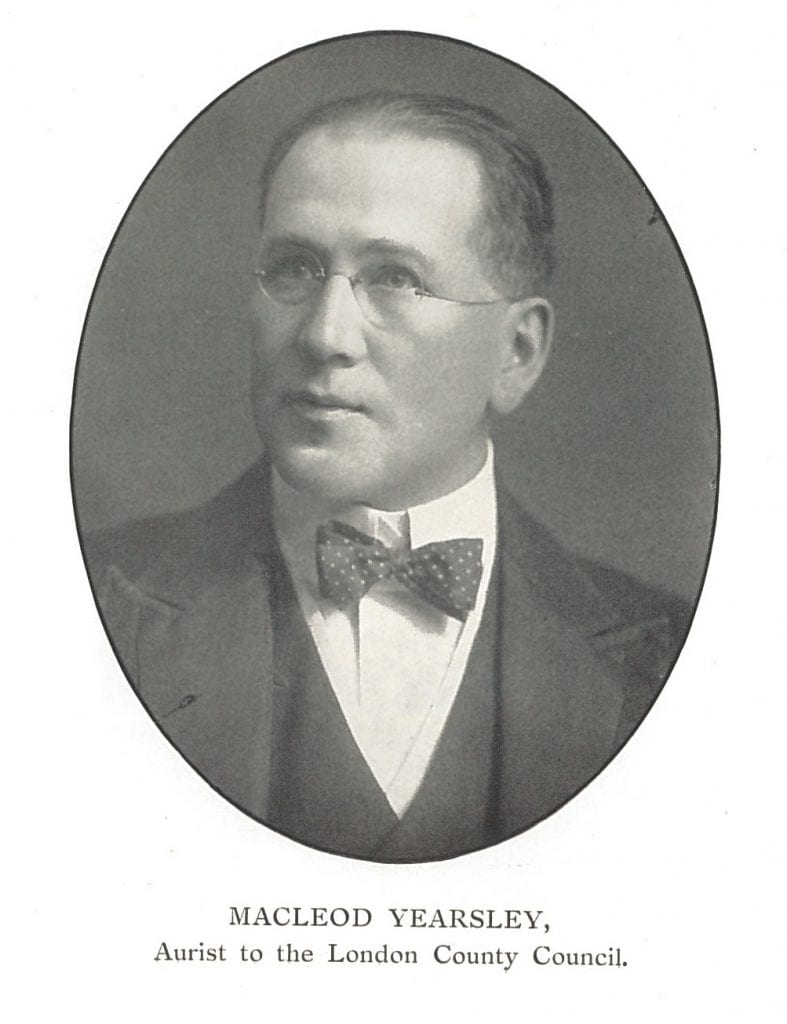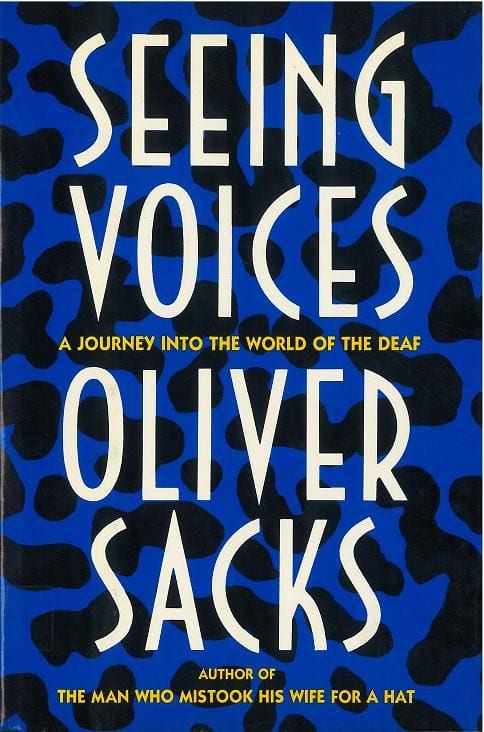The early NID Technical Department, Dennis B. Fry and Péter B. Dénes of UCL
By H Dominic W Stiles, on 23 December 2016
UCL has had an association with the RNID/Action on Hearing Loss Library since the early 1990s when the library moved into the Royal National Throat Nose and Ear Hospital alongside the then Institute of Laryngology Library. However there is a much older association between UCL and what was then the NID.
 War time developments in electronics ushered in an era when mass hearing aids would be small enough to be convenient to carry around, and cheap enough for the state to introduce the Medresco hearing aid supplied by the new NHS from 1948. The previous year the transistor had been unveiled by Bell labs in the US, an invention that would change the world.
War time developments in electronics ushered in an era when mass hearing aids would be small enough to be convenient to carry around, and cheap enough for the state to introduce the Medresco hearing aid supplied by the new NHS from 1948. The previous year the transistor had been unveiled by Bell labs in the US, an invention that would change the world.
For many years the NID had been concerned over the quality of hearing aids and they way they were marketed to the public. They worked with manufacturers and suppliers to create an agreement whereby the supplier made no claims about curing deafness, as had often been the case with quack sellers, and broadly to not bully clients into buying unwanted devices. They also created an approved list of suppliers who signed up to the agreement. This was a slightly tortuous process, and for those interested a visit to the library to read NID minutes would be essential. The list is attached here: NID approved list
 In 1947 The NID set up a technical department, at the behest of the Medical Committee (Annual Report, 1947 p.9). At the time they were in 105 Gower Street, and did not have facilities, so initially UCL helped out, and Dennis Butler Fry (1907-84) led the efforts to establish testing to show the ‘technical characteristics and qualities of the various hearing aids’ which were available, and then publish this scientific information to the public (Denes & Fry p.304).
In 1947 The NID set up a technical department, at the behest of the Medical Committee (Annual Report, 1947 p.9). At the time they were in 105 Gower Street, and did not have facilities, so initially UCL helped out, and Dennis Butler Fry (1907-84) led the efforts to establish testing to show the ‘technical characteristics and qualities of the various hearing aids’ which were available, and then publish this scientific information to the public (Denes & Fry p.304).
Fry was born on the 3rd of November, 1907, in Stockbridge, Hampshire, son of Fred Cornelius Fry and Jane Ann Butler.
After five years of teaching French, first at Tewkesbury Grammar School and then at Kilburn Grammar School, in 1934 he was appointed Assistant Lecturer in Phonetics at University College London, where he also became Superintendent of the Phonetics Laboratory in 1937. In 1938 he was promoted to Lecturer in Experimental Phonetics. In 1948, the year after the award of his Ph.D. degree, he became Reader in Experimental Phonetics. From 1958 until his retirement in 1975, he was Professor of Experimental Phonetics, the first one to hold the title in Britain. (Obituary for Dennis Butler Fry, Arthur S. Abramson
The 1947 annual report records that with the co-operation of Sir David Pye, UCL provost and mechanical engineer who worked on jet engines during the war, they were setting up a special sound-proof room, and that technical staff would be trained at the college, all under the supervision of Fry. Fry had served in the RAF during the war, at the Acoustics Research Laboratory, Central Medical Establishment, at Kelvin House, 24-32 Cleveland Street, London. Together with his colleague Péter B. Dénes (1920-96), a Hungarian phonetician who became a British citizen, but spent much of his later working life in the USA. The books of Fry and Dénes (usually written Denes) on phonetics are still in use today. Fry founded the journal Speech and Language in 1958. He wrote two books with Edith Whetnall (they are pictured together below), The Deaf Child, and Learning to Hear.
Denes had left Hungary in the 1930s and studied first at Manchester, before moving to UCL where he worked with Fry. In 1961 he went to the USA on the Queen Mary to work at the Bell Labs (1996 obituary, see link below). In his obituary, Michael Noll says,
Although Hungarian by birth, Peter was very much British by citizenship and personality. His knowledge of European history and views on events in America led to many lively discussions with his many friends and colleagues. Peter chose to remain a subject of the Queen of England, but he also chose to live in the United States.
The room in the basement of 105 was eventually fitted out for technical testing, along with the anechoic chamber. In those days the road traffic would not have been as bad as now, and I suspect it would not have been possible to use it today, because of vibrations. The first technician seems to have been Mr W.J. Markwick, who is mentioned in the 1950 annual report (p.33). The Technical department became one of the most important areas for the NID in the following decade.
I am sure this would be an interesting area for research. Denes and Fry were both interesting people who made significant contributions to speech and language research.
Denes, P. and Fry, D.B. An Introduction to the NID Technical Research Laboratory
NID Annual Reports
Abramson, Arthur S. Obituary for Dennis Butler Fry. Speech Communication Volume 3, Issue 2, August 1984, Pages 167-168
http://www.phon.ucl.ac.uk/home/wells/fry-obit.htm
Noll, Michael, Acoust. Soc. Am., Vol. 100, No. 4, Pt. 1, October 1996, p.1916 http://asa.scitation.org/doi/pdf/10.1121/1.417840
 Close
Close



